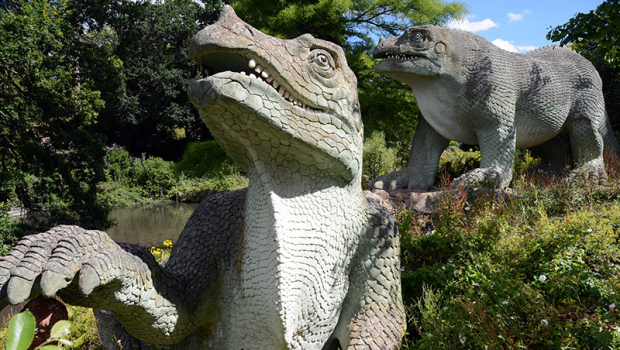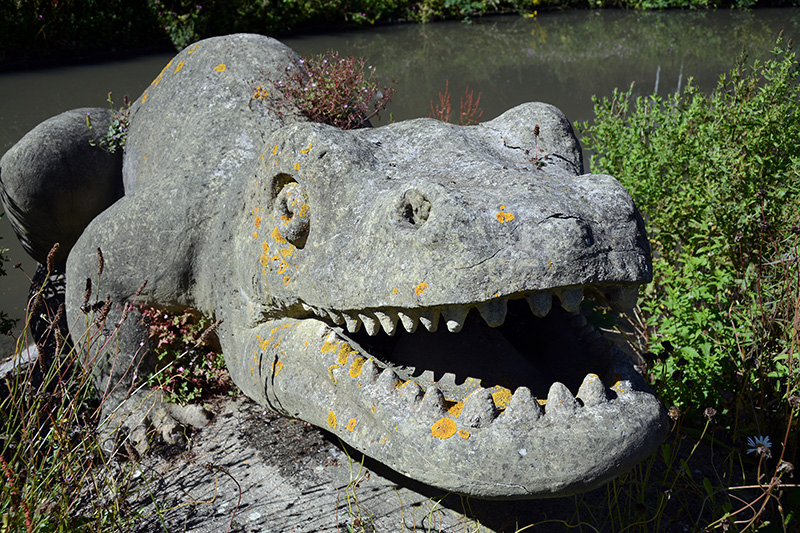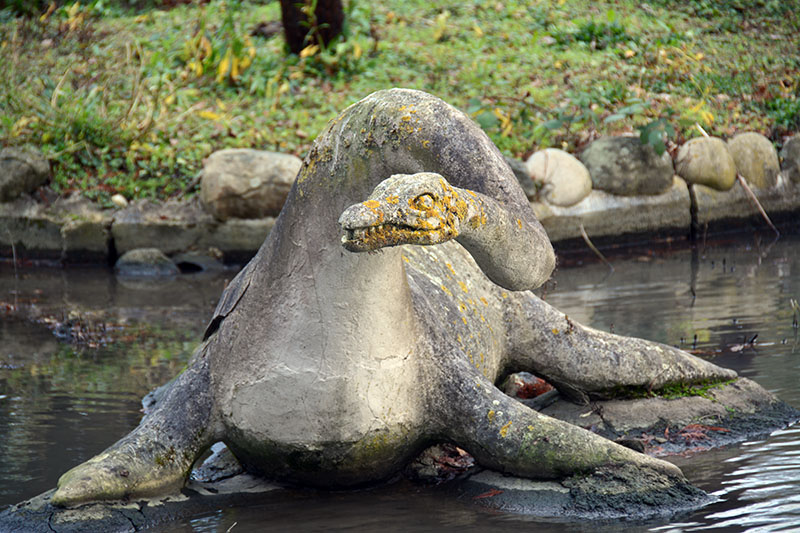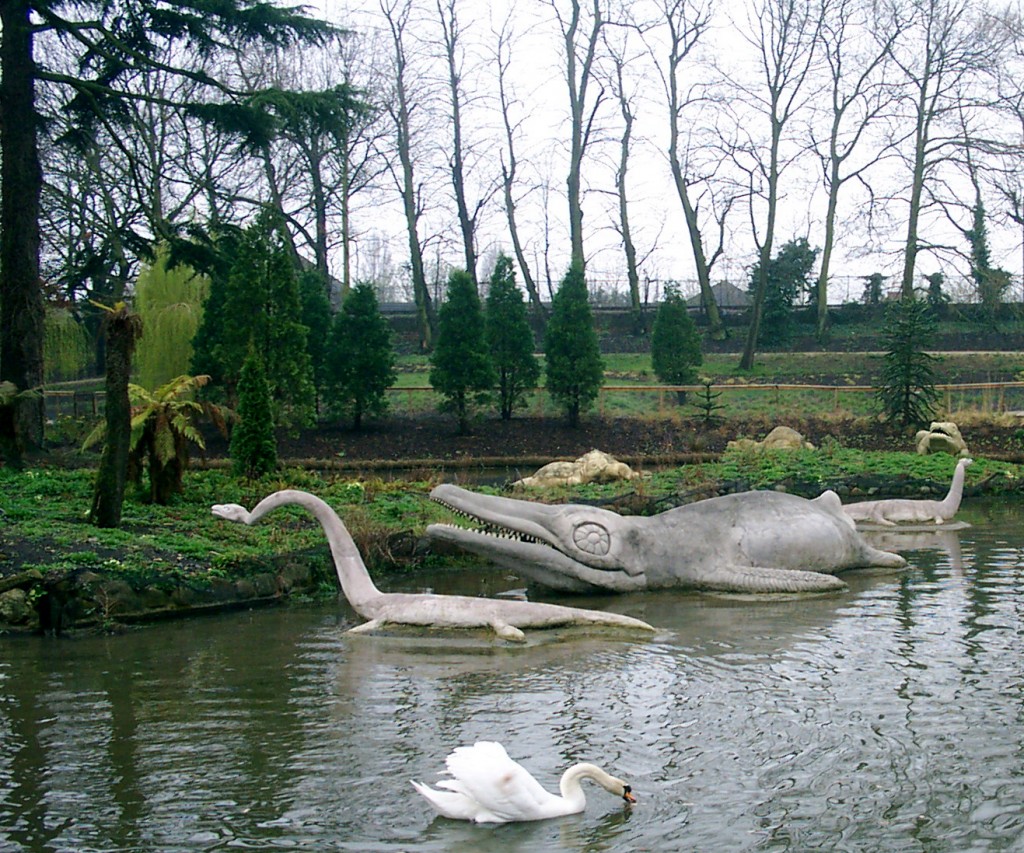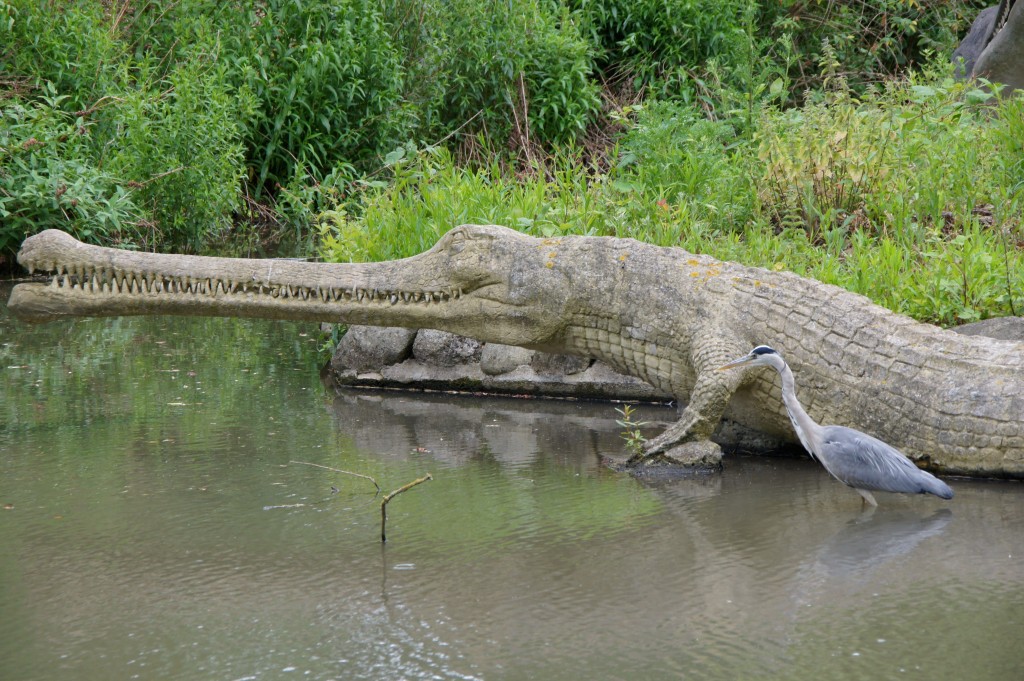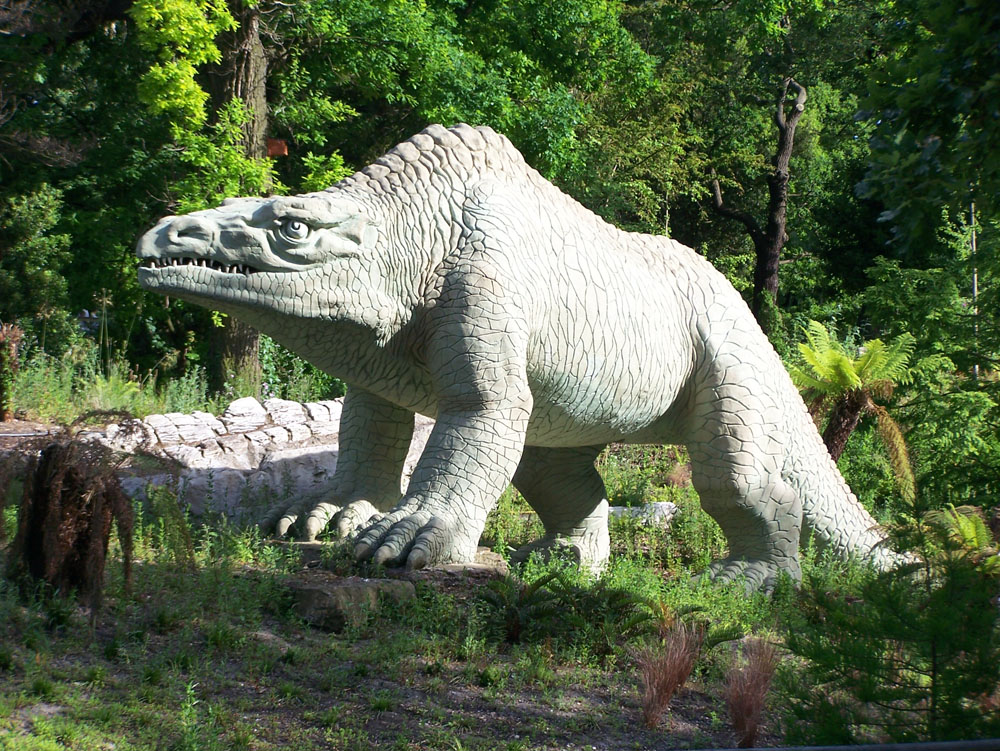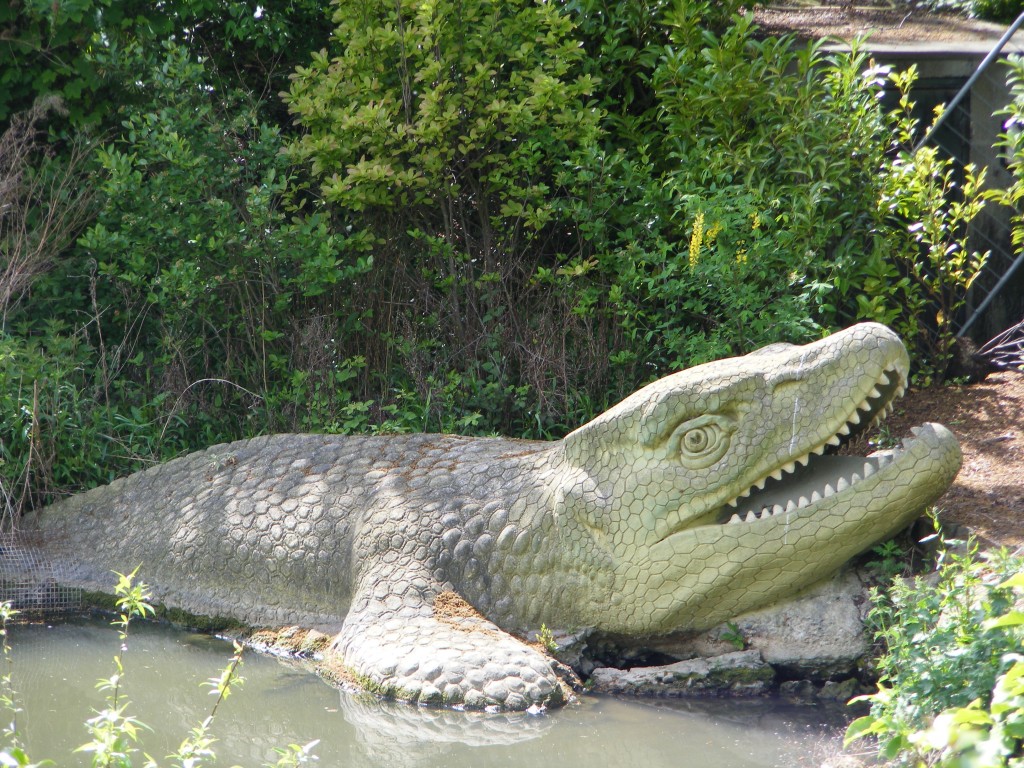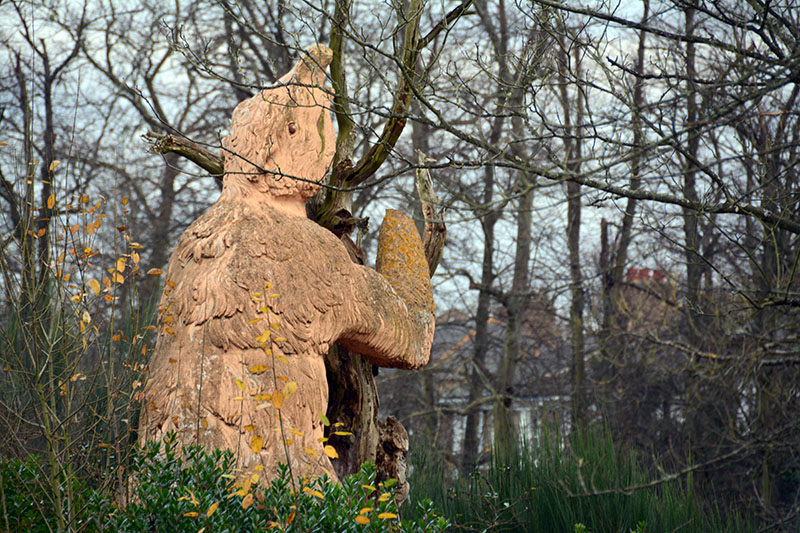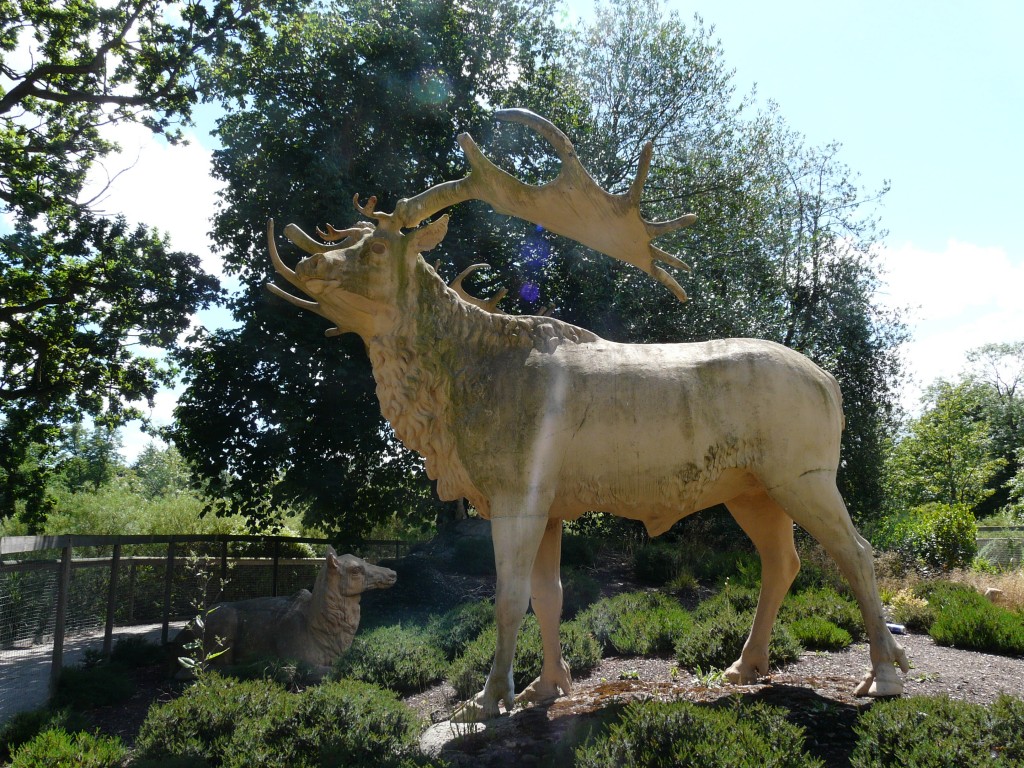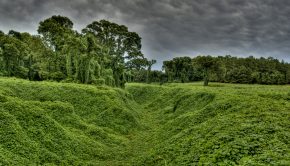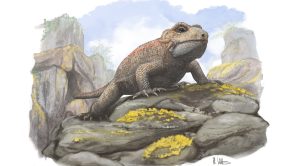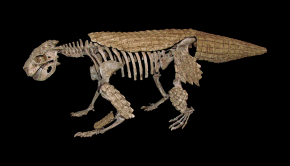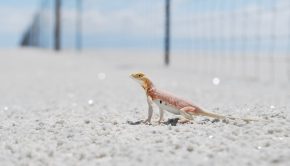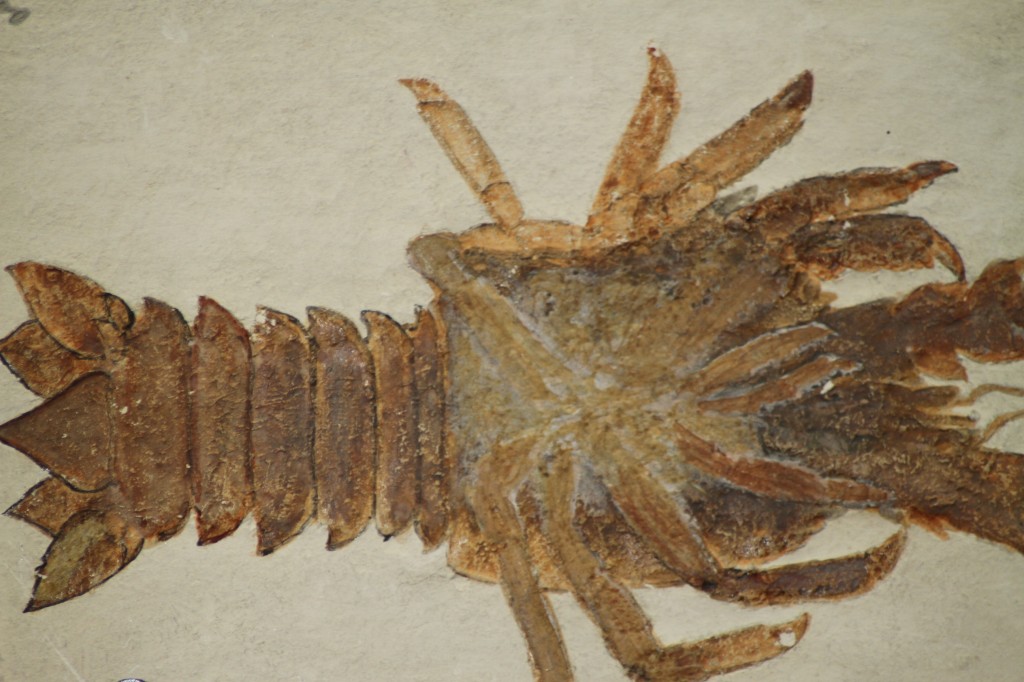Episode 54: Crystal Palace Dinosaurs
The ‘Crystal Palace Dinosaurs’ are a series of sculptures of extinct animals including dinosaurs, other extinct reptiles and mammals, which can be found in the grounds of the Crystal Palace in London. Commissioned in 1852, these are the earliest examples of dinosaur sculptures in the world. In fact, the first dinosaurs had only recently been discovered some 30 years earlier. Why were these models built? And what do they tell us about early scientific hypotheses of dinosaurs and other extinct animals? To answer these questions we talk to Joe Cain, Professor of History and Philosophy of Biology at University College London.
Podcast: Download (Duration: 46:59 — 64.5MB)
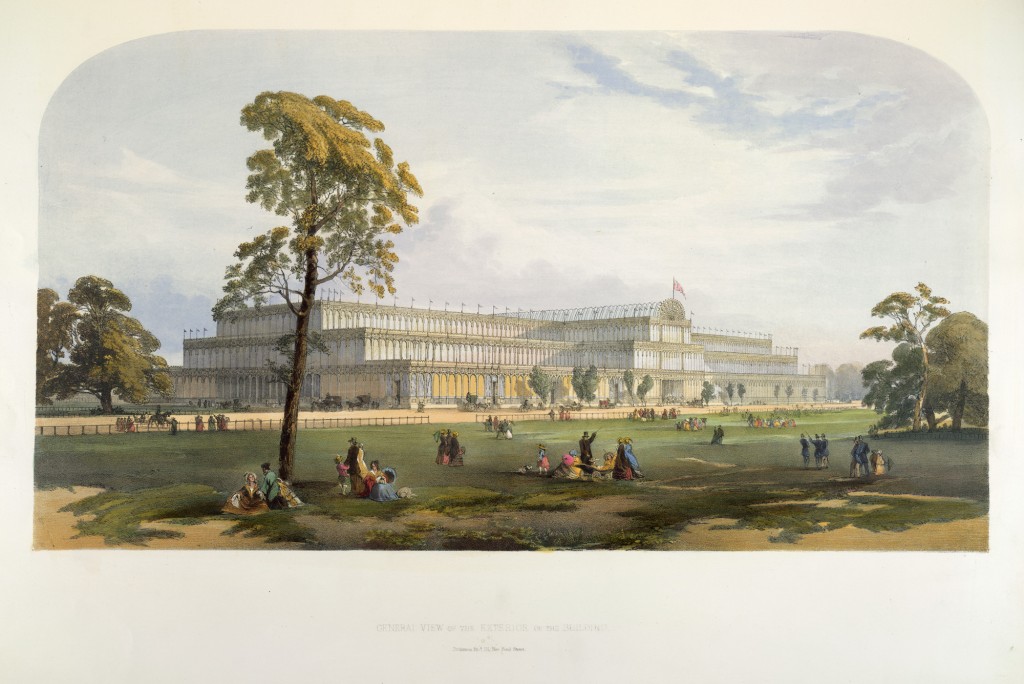
In 1851, Prince Albert, along with members of the Royal Society for the Encouragement of Arts, Manufactures and Commerce, organised the Great Exhibition. This was a showcase of culture and industry from across the British Empire. To house the Great Exhibition, a huge glasshouse, coined ‘The Crystal Palace’, was constructed in Hyde Park. The Great Exhibition and the Crystal Palace were depicted in a series of images, published in ‘Dickinson’s Comprehensive Pictures of the Great Exhibition of 1851’. Image from the British Library PD.

The Great Exhibition was opened by Queen Victoria and was attended by some six million people – equivalent to a third of the population of Britain at the time. Image from Wikimedia PD.
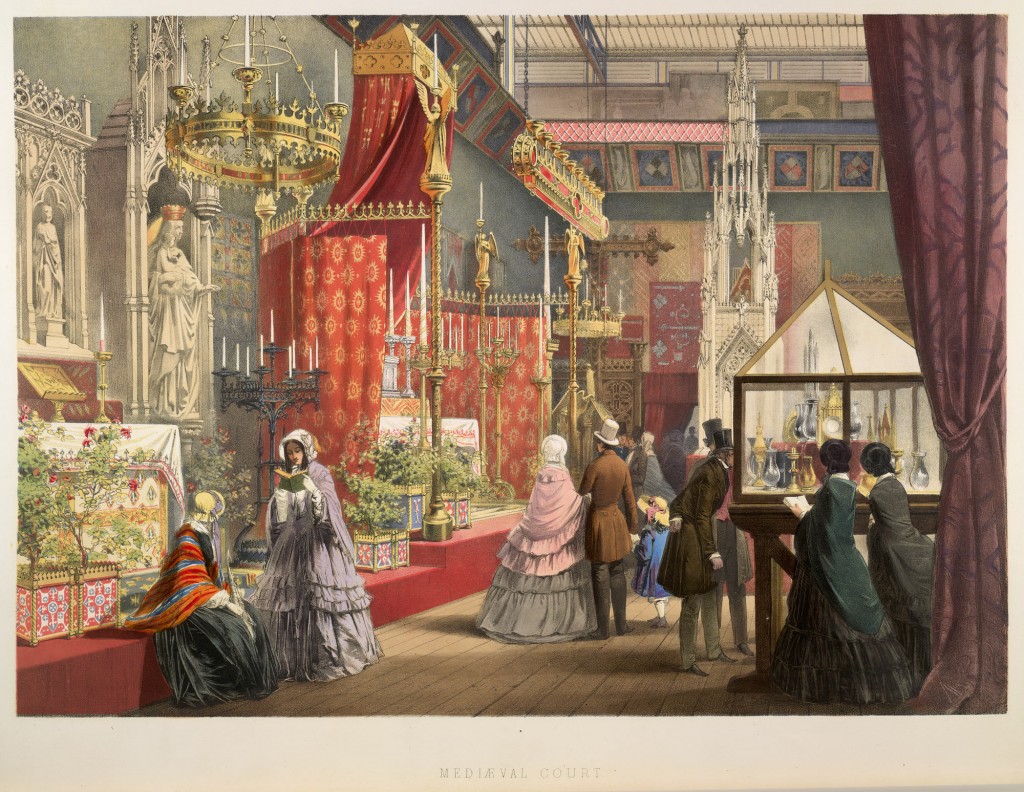
The exhibits within the Crystal Palace showcased some of the greatest treasures and technological marvels from across the globe, including the Koh-i-Noor (the largest diamond in the world at the time), a precursor of the fax machine, a barometer that used leeches and a prototype Colt revolver. Image from ‘Dickinson’s Comprehensive Pictures of the Great Exhibition of 1851’, British Library PD.
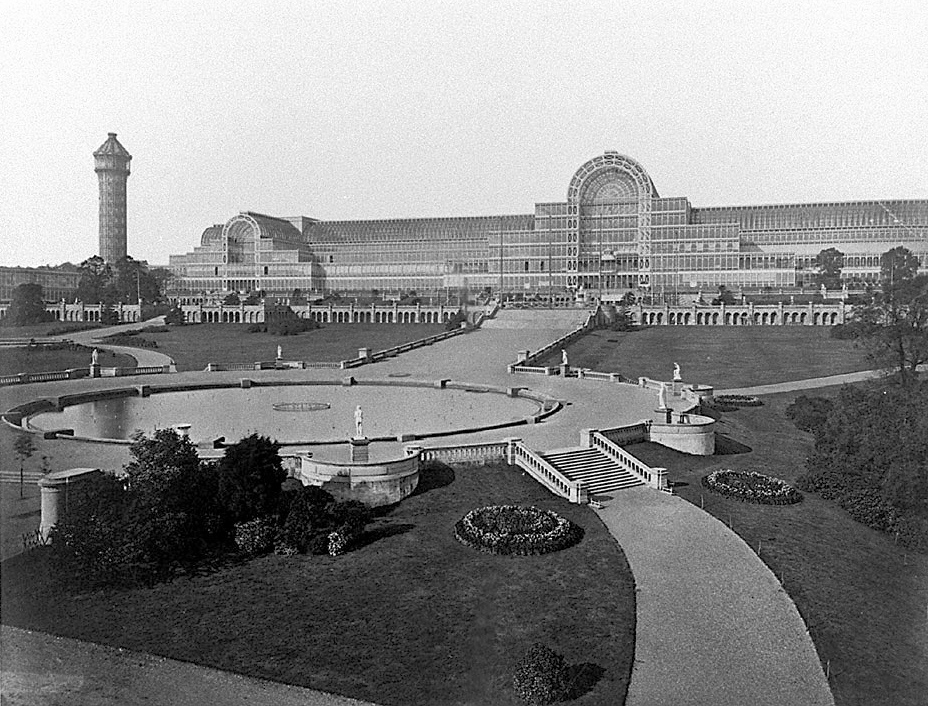
Following the Great Exhibition. The Crystal Palace was dismantled and moved to a new location in Sydenham. Image from Wikimedia PD.
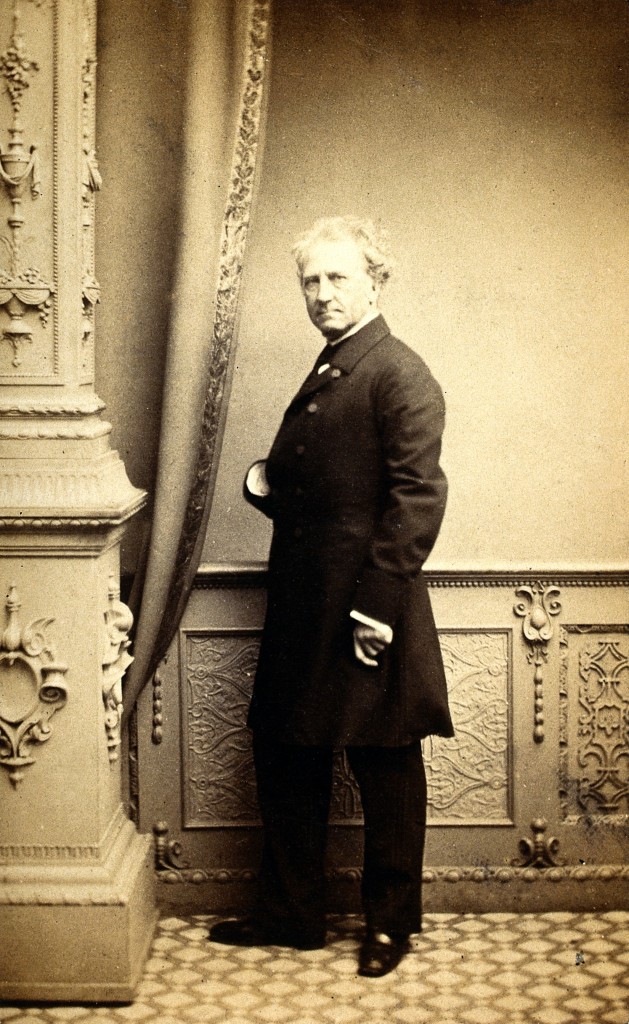
It was at this time that the natural history artist Benjamin Waterhouse Hawkins, was commissioned to produce a series of sculptures of prehistoric animals, to be displayed within the grounds of the Crystal Palace in Sydenham. Photo by Photograph by Maull & Polyblank. Image from ‘Wellcome Images’ CC 4.0.
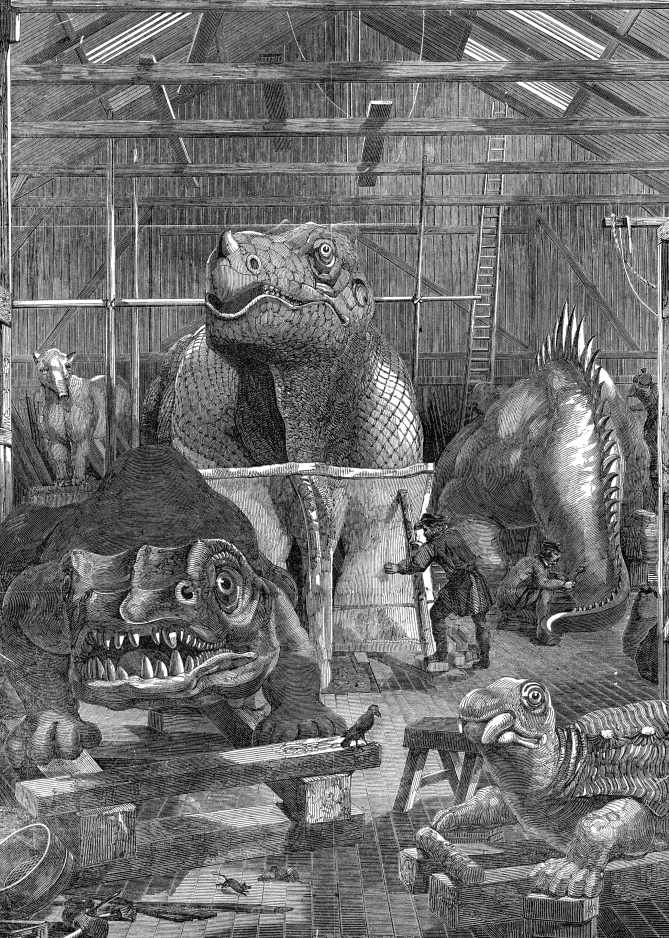
This etching depicts Waterhouse Hawkins’ Sydenham studio, in which he created the sculptures. Image from Wikimedia PD.
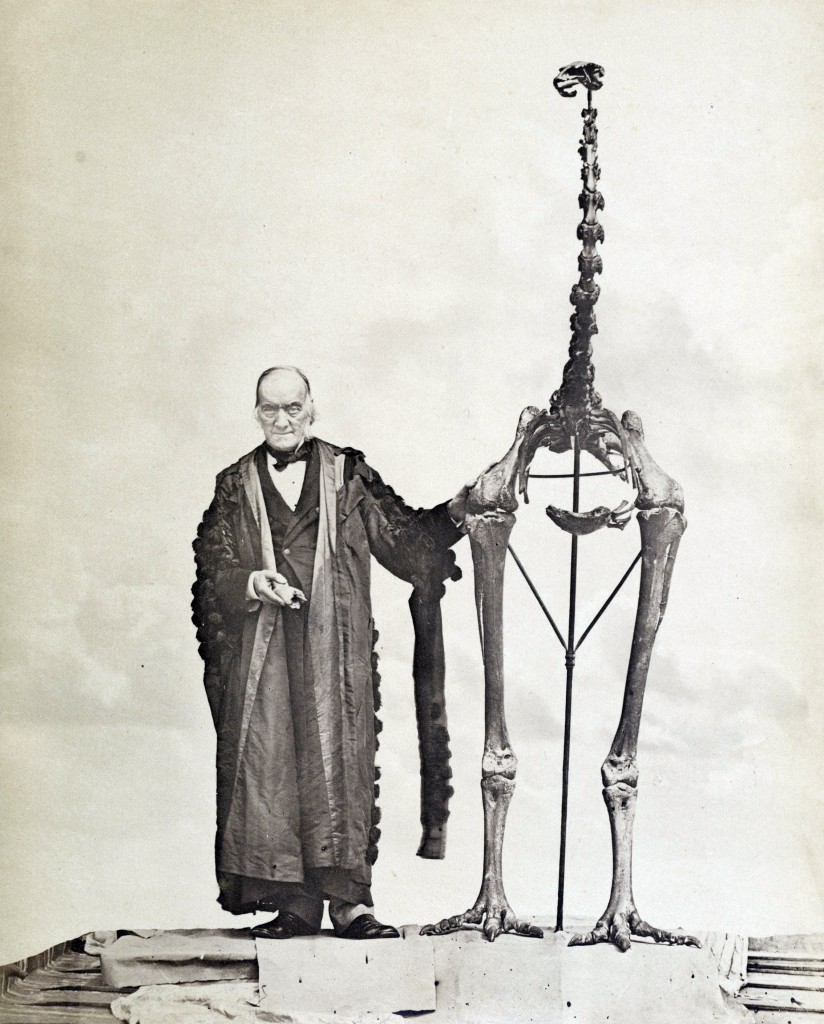
Hawkins worked closely with Richard Owen (photographed here posing next to a skeleton of Dinornis, the Giant Moa, 1879). Owen was the leading authority on Vertebrate palaeontology and comparative anatomy Image from Wikimedia PD.
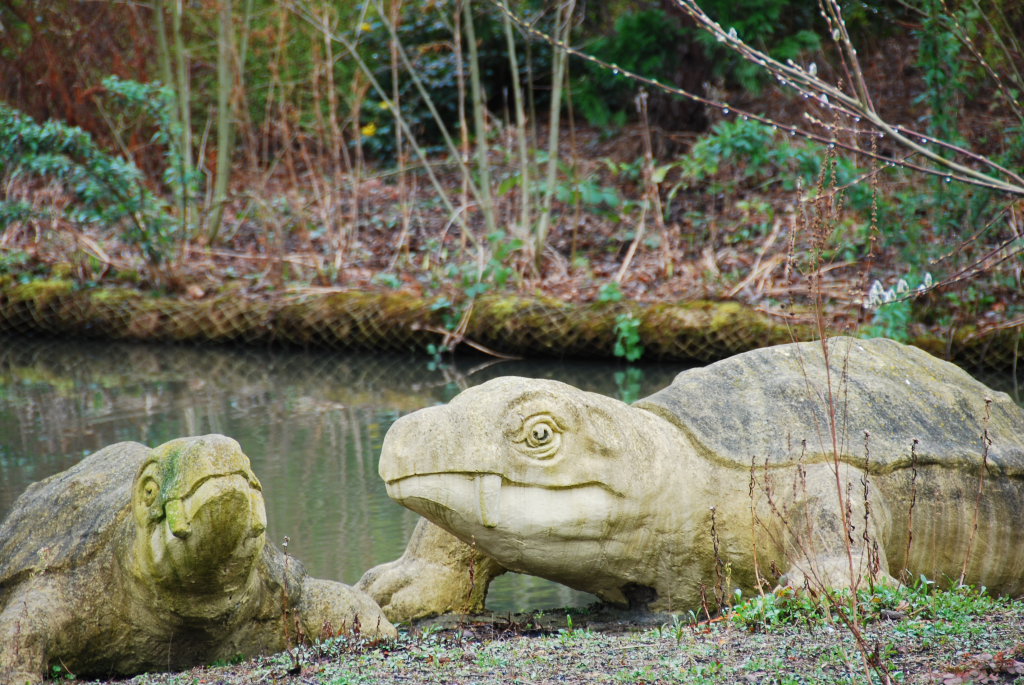
Sadly, the Crystal Palace was destroyed in a fire in 1936. However, Hawkins’ sculptures can still be found in the palace grounds to this day. The sculptures are exhibited in the sequence of their stratigraphic occurrence, so visitors can take a walk through. This photo shows Hawkins’ models of the permian synapsid Dycinodon. He reconstructed these animals with turtle-like shells. Image credit: Joe Cain
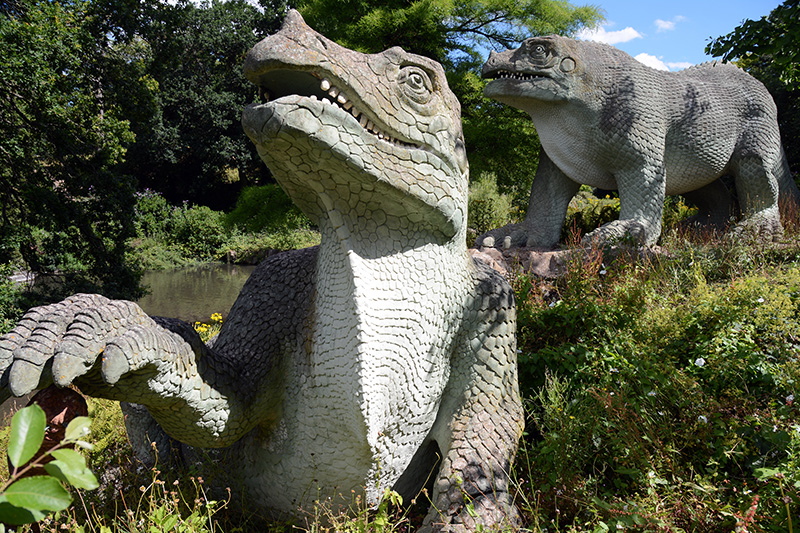
Hawkins created two Iguanodon sculptures in differing postures based on competing hypotheses. Image credit: Joe Cain.
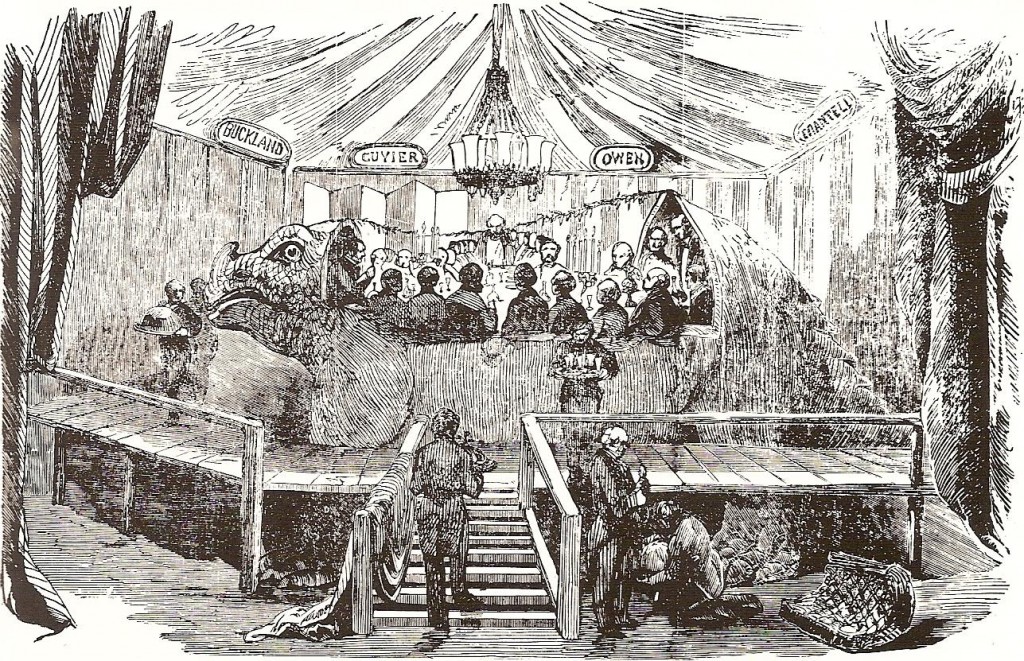
As a promotion for the Dinosaurs exhibition Hawkins hosted a New Years Eve dinner party inside the unfinished sculpture of an Iguanodon for members of the Press and a few scientists (including Owen). Image from Wikimedia PD.
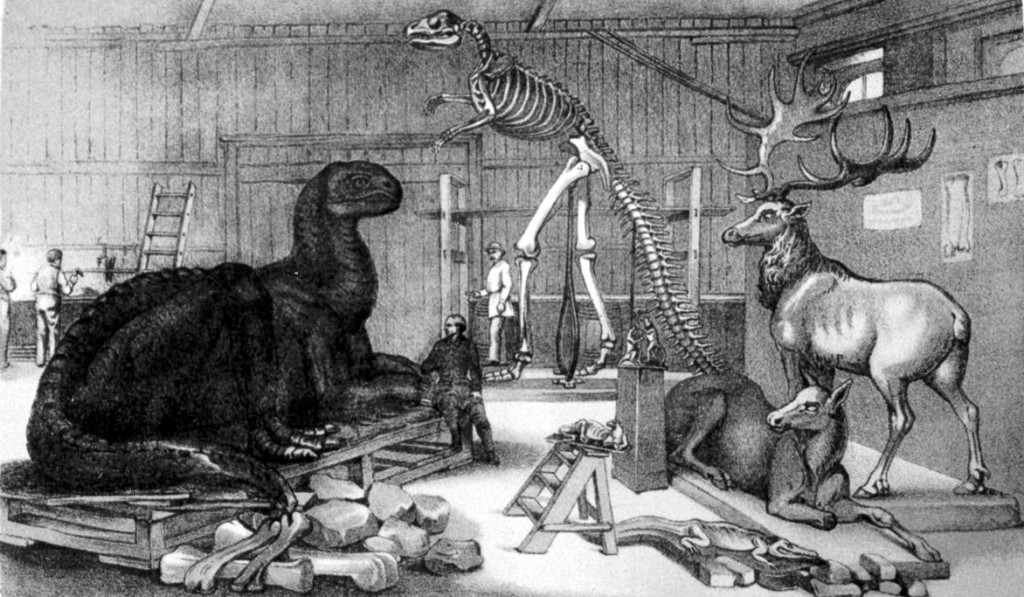
Benjamin Waterhouse Hawkins’ later tried to replicate his dinosaur exhibition in New York. This image depicts his studio at the Central Park Arsenal, where he worked on the New York dinosaurs. Sadly, this exhibition was never to be. The sculptures were destroyed before they were completed. Image from Wikimedia PD.

